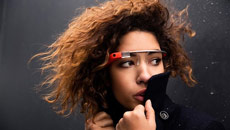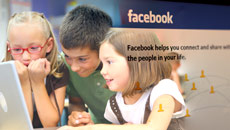ORLANDO, Fla. — I knew I wouldn't get real-time traffic information and other features when I opted to rely solely on Google's offline mapping capabilities for a week in and around Disney World near Orlando, Florida.
In fact, Google Maps gave me trouble the moment I tried to leave the airport parking lot.
But things got much smoother after that. It wasn't exactly painless; while I mostly got where I needed to go, it sometimes came at the cost of delays that had nothing to do with traffic. But being able to navigate with no cellular connection certainly beat getting lost because I had no signal.
___
HOW IT WORKS
You might not realize this, but mobile mapping apps can typically still direct you even if you lose your cellular connection; their turn-by-turn voice prompts can tap GPS location information when cellular signals aren't available (though with less precision than having both).
It's still a bit like wandering around in the dark: The apps can't display a map for you without downloading it first, and they need an Internet connection for that. They also can't reroute you if make a wrong turn.
That's where Google Maps' offline features come in. You simply download mapping data for a given area ahead of time. That gives you local maps to enable GPS-based navigation. The downloaded data also includes enough information on nearby shops and other businesses so that you can simply give the app the name of your destination rather than a specific address. If you're old-school, you could even use these maps to find your way around as you would with traditional paper maps.
This is helpful if you're in a remote national park with poor cellular connectivity or if you're travelling internationally where cellular data gets expensive. Just download mapping data for the places you're going before leaving home or from a hotel room with Wi-Fi.
For this test, I used a Samsung Android phone with its cellular service turned off. The Google Maps iPhone app also offers offline access.

EARLY MISHAPS
In the Orlando airport's rental-car parking deck, Google Maps found my first destination easily. Trouble was, it didn't know where to start. Google Maps was designed for parking garages with spotty cellular connection. Here, though, the GPS signal was also terrible; the app thought I was still in New York. I had to walk over to an exit ramp to find a clear GPS signal. This might not be a problem if you're coming from somewhere nearby, like your office, but the app needs a location refresh after flights.
I also couldn't request a route without highways or tolls, as Google Maps allows in normal use. I don't mind paying a few dollars in tolls, but many bridges and highways these days won't take cash. If you don't have an electronic-payment service such as Florida's SunPass, you're billed using a photograph of your license plate. Rental-car companies typically add fees when this happen. Fortunately, the toll plazas I encountered took cash.
___
OTHER LIMITATIONS
With no real-time traffic data, you don't get alternate directions if there's unusual congestion ahead. Information on businesses is also limited; you get contact information and hours of operations, but not customer reviews.
You also can't use offline features for mass transit, walking or biking. It's for driving only, and if you try to use it as a pedestrian, it might send you down an interstate shoulder. (We don't recommend that.)
I knew all that ahead of time. But there were still two big surprises:
— I wasn't able to search businesses by type, such as gas stations. I tried typing big gas-stations brands such as "Chevron" and "Exxon," but found only ones several towns away. I had to slide the map around until I found what looked like a gas station near the airport.
— When offline, you miss hints about which lane you need, such as the second lane from the right if you need to steer left just after taking an exit ramp.

OVERALL SATISFACTION
I was expecting road closures and detours because of the running races I had come to Disney World for. Fortunately, Google Maps had no trouble rerouting me. It needs no cellular connection for that.
And downloads weren't oppressive. A standard download covering greater Orlando took up about 130 megabytes, the equivalent of a minute of high-definition video. Expanding that to about 500 megabytes gave me the option to drive to either coast of Florida, including Kennedy Space Center about an hour away. A cross-country trip can easily fill your phone, though.
Google Maps isn't the first to offer offline capabilities on iPhones and Android devices, but other offline apps I've tried cost money and weren't easy to use.
Notwithstanding a few mishaps, Google Maps is both free and reliable.





